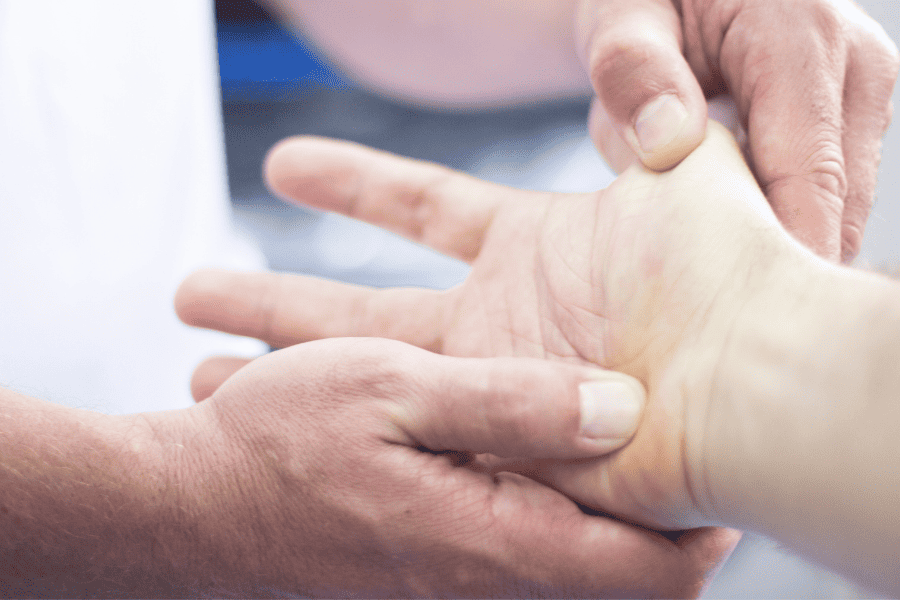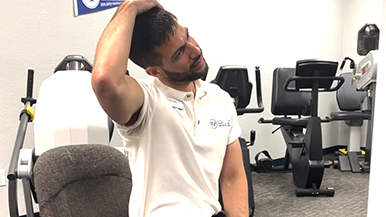- What is Hand Therapy?
- Hand Therapy Techniques and Treatments
- The Importance of Hand Therapy
- Taking the Next Step
In our daily lives, we often take our hands for granted, effortlessly using them to perform countless tasks. However, when a hand injury or condition affects our ability to use this intricate instrument, it becomes apparent just how crucial our hands are. Hand therapy is a specialized branch of rehabilitation that focuses on the assessment and treatment of hand and upper extremity injuries or conditions.
In this blog post, we will delve into the world of hand therapy at Ability Rehabilitation and explore its significance, techniques, and the vital role it plays in restoring function and independence.
In this blog post, we will discuss the potential of physical therapy in treating pelvic pain and its role in empowering individuals on their journey toward pain relief and recovery.
What is Hand Therapy?
Hand therapy is a specialized area of rehabilitation that encompasses the evaluation and treatment of conditions affecting the hand, wrist, forearm, and upper extremities. It is a dynamic field that combines the expertise of occupational therapy and physical therapy to provide comprehensive care for patients with various hand-related issues.
Hand therapists are highly trained professionals with advanced knowledge of the anatomy, biomechanics, and pathology of the hand and upper extremity. They work closely with individuals who have experienced trauma, undergone surgery, or developed conditions such as arthritis, carpal tunnel syndrome, tendonitis, fractures, etc. The primary goal of hand therapy is to optimize hand function, reduce pain, and enhance independence in daily activities.
Hand Therapy Techniques and Treatments

Hand therapy employs a wide range of techniques and treatments tailored to the specific needs of each patient. These interventions promote healing, alleviate pain, increase range of motion, restore strength, and improve dexterity. Here are some common techniques employed in hand therapy:
- Therapeutic Exercises: Hand therapists utilize targeted exercises to improve strength, flexibility, and coordination. These exercises may involve gripping, pinching, manipulating objects, or utilizing specialized equipment to enhance hand function.
- Range of Motion (ROM) Exercises: To address stiffness and limited mobility, therapists employ gentle stretching exercises and manual techniques to improve the range of motion in joints of the upper extremity, including fingers, wrist, forearm, elbow and shoulder..
- Manual Therapy: Therapists may employ manual techniques such as joint mobilization, soft tissue mobilization, and massage to reduce pain, enhance circulation, and improve tissue healing.
- Custom Splinting: Hand therapists often fabricate custom splints to support, protect, and immobilize injured or post-operative hands. These splints can assist in reducing pain, promoting healing, and preventing further damage.
- Scar Management: Hand therapy is crucial in scar management after surgery or trauma. Therapists employ massage, compression, and specialized creams to minimize scar adhesions and improve tissue pliability.
- Functional Retraining: Hand therapists focus on restoring functional abilities required for activities of daily living (ADLs) and work tasks. This may involve practicing specific movements, adapting tools or equipment, and incorporating work or home simulations.
The Importance of Hand Therapy
Hand therapy is essential for individuals who have experienced hand injuries, undergone surgery, or have conditions affecting hand function. By addressing pain, stiffness, weakness, and limited mobility, hand therapists play a pivotal role in helping patients regain optimal hand function and independence.
Beyond the physical benefits, hand therapy also provides psychological support by boosting confidence, reducing anxiety, and facilitating a sense of control over one’s recovery process. Hand therapists work collaboratively with patients, empowering them to actively participate in their rehabilitation journey and achieve meaningful outcomes.
Taking the Next Step
 Hand therapy is a specialized field of rehabilitation that focuses on restoring hand and upper extremity function. Through a combination of advanced techniques and treatments, hand therapists help individuals recover from injuries, surgeries, and conditions affecting the hand.
Hand therapy is a specialized field of rehabilitation that focuses on restoring hand and upper extremity function. Through a combination of advanced techniques and treatments, hand therapists help individuals recover from injuries, surgeries, and conditions affecting the hand.
By addressing pain, improving mobility, and enhancing strength and dexterity, hand therapy enables patients to regain independence and successfully reintegrate into their daily lives. If you or someone you know is struggling to use their hands, please don’t hesitate to contact us and request an appointment.



